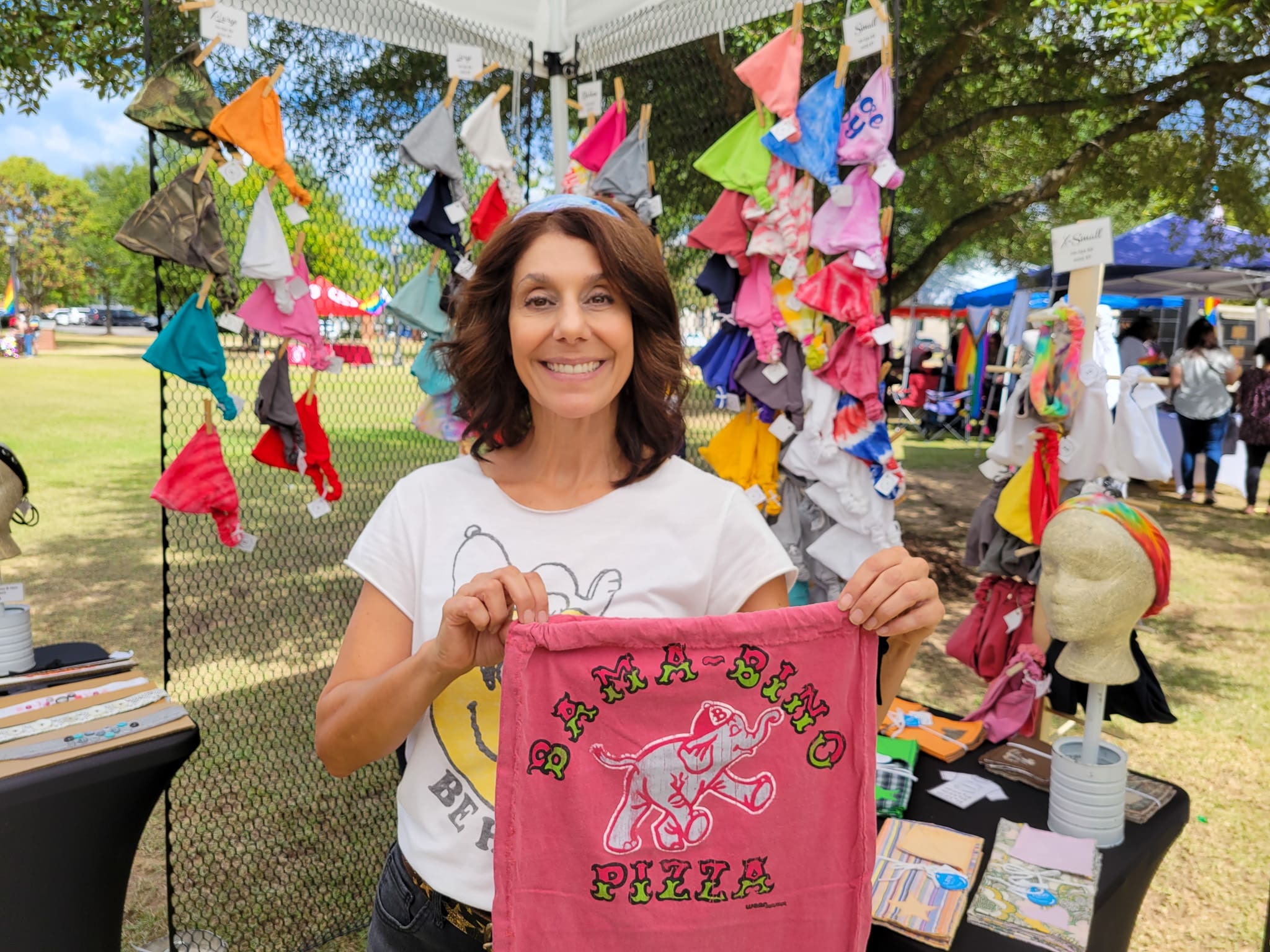For Gina Noelle Yoder, being thrifty with materials came naturally to her. She grew up in a household where she was taught to avoid wasting materials.
“My grandmother moved to the United States from Italy when she was eight years old,” Yoder said. “(She) didn’t speak English and she raised all of us where you use what you have or you repurpose what you have first, instead of buying new. And we all grew up that way. And I’m a middle child. So, I feel like I’m sort of born into secondhand.”
The initial idea for upcycling old T-shirts came because of Yoder’s daughter.
“She loved to wear bandanas that you could tie in the back,” Yoder said. “She couldn’t reach to tie it herself. But didn’t want me to do it for her because she was independent already at seven. So, I decided to make a headband with the elastic, so she could put it on herself.”
Instead of buying new material, Yoder decided to use some of her daughter’s old T-shirts that didn’t fit anymore. Later, a friend of Yoder’s suggested that she try selling headbands made from T-shirts, so Yoder gave it a whirl at the Druid City Art Festival in Tuscaloosa.

Yoder first started with the headbands in 2016, now, seven years later, she’s expanded her operations to include different sizes and types of bags, headbands, napkins and coasters. One of her goals is to use as much as possible of each T-shirt that she upcycles.

“I didn’t want to waste any of the material,” Yoder said.
For Yoder, a large motivating factor to use as much of the T-shirt as possible is that it takes over 700 gallons of water to grow the cotton used in a single cotton T-shirt.
Yoder has come up with specific uses for almost every part of a T-shirt.
She uses the sleeves to make smaller drawstring bags that could serve a whole host of uses.
“When I find a really cool T-shirt, I use the whole T-shirt except for the sleeves to make a larger bag,” Yoder said.
If she doesn’t turn the body of the shirt into a bag, she will usually use it to make headbands. The napkins and coasters, Yoder explains, often are made from the leftovers of the T-shirts she is using.

Of course, as she dismantles these shirts to create new items, she naturally winds up with scrap materials.
Since Yoder hates to waste anything, she recently started using the leftover scraps to make fabric that she stitches together for things like zippered bags.
“I basically make a sheet of fabric that I can then cut into whatever shape I want,” Yoder said.
The shirts that she uses do have to be in good condition, so she shops at thrift stores to find T-shirts that meet her needs. She also has people who bring her specific shirts that they want turned into bags.

“A lot of moms, they hate to give up their child’s favorite T-shirt from when they were little,” Yoder said. “And they don’t want to throw it away. But for it to just sit in a drawer at home seems useless.”
Sometimes, she makes things outside of her usual list of items.
“I’ve made a pillowcase out of someone’s favorite T-shirt before,” Yoder said.
While items made from upcycled T-shirts are her main product, they are not the only things she creates.
Yoder has been doing freelance graphic design work since she graduated college. Her business, G. Noelle Designs, is one that she had been operating under long before she started upcycling T-shirts.
“I’ve made some like CD jackets and covers and inserts for professors at the [University of Alabama] music department,” Yoder said.

She also sells bobby pins and lapel pins that she makes from other upcycled materials.
“When I started attending estate sales, there would be jars of buttons,” Yoder said. “I would take the buttons, and at first, I just stared at them…I was like, ‘What can I do with these buttons?’”
She used a Dremel tool to file down the raised backs of the metal buttons she found, then adhered them to bobby pins.
“I’m just always trying to reimagine all the treasures that I find,” Yoder said.
Anyone looking to view more of Yoder’s work, contact her or see which event she’ll attend next can check out the G. Noelle Designs Facebook page.


